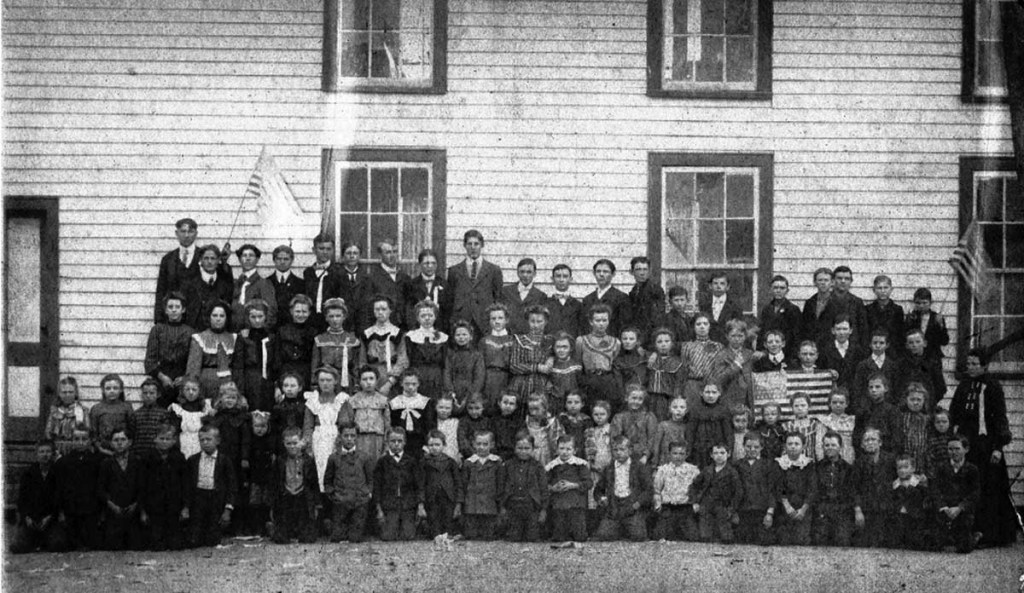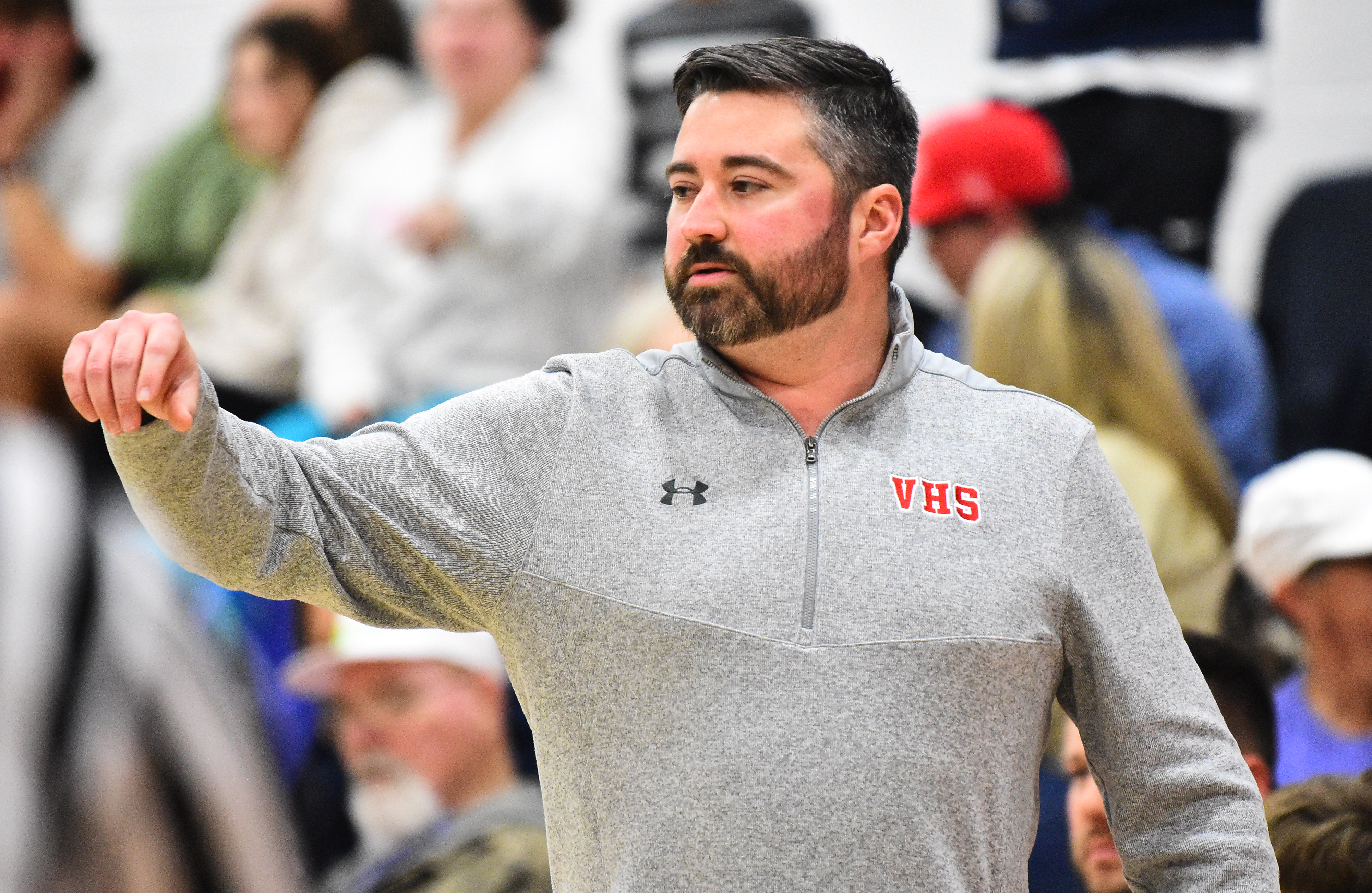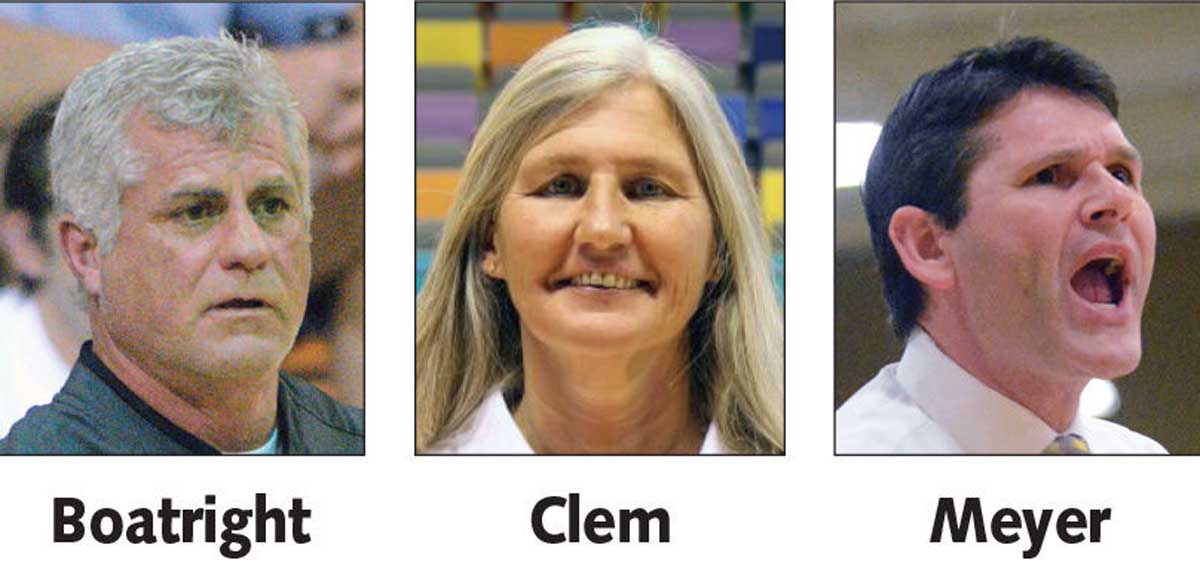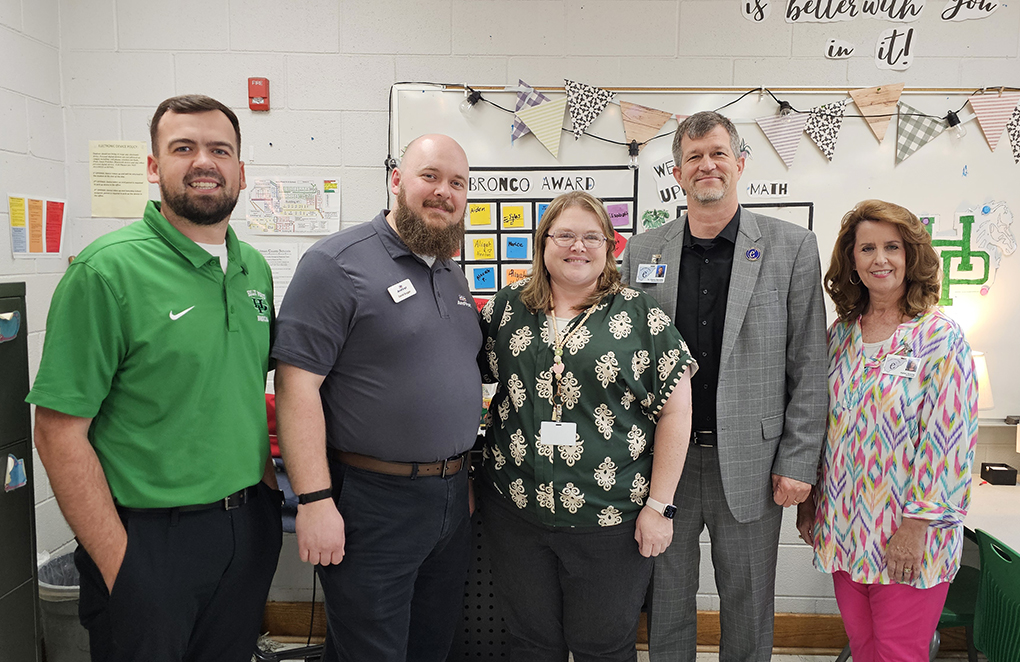Cullman’s historic one-room schoolhouses
Published 1:09 pm Sunday, March 16, 2014

- Taken in 1900 by Herman Wiggins, this is the Holly Pond School, the second school to be built after the one-room school was done away with. No known photos are available of the one-room school. Built in 1891, this two-story four-room school was located south of U.S. Highway 278 across from the Baptist Church. Miss Sallie Waid, teacher, is on the right; and Mr. T. R. Guthrie, teacher, is on the top left holding the flag. Blackboards were painted on the walls. The building was used as a residence for several years by Mr. Will Wiggins, and later as rental property. The young man near the flag (upper left) is Lonnie “L.Q.” Wiggins, who later married his teacher, Miss Sallie Waid.
Cullman’s rich heritage has many facets. Within its boundaries are historic buildings, bridges, churches, cemeteries and schools. There are also natural landmarks like waterfalls, mountains and roads that were once only trails through dense forests.
Cullman County was the scene of Civil War battles, of incidents and legends of courageous heroes and of quiet men and women who shaped this area through hard work and a vision for the future. Cullman has managed to preserve many private homes, public buildings and businesses that have retained their historic integrity, often bearing family names which are interwoven into the very fabric of Cullman County’s illustrious history.
Cullman is fortunate to have had many dedicated civic leaders and generous private citizens who were forward thinkers and enterprising enough to have saved many of these ties to an era which will never be recaptured, but can be preserved.
In the coming weeks, The Cullman Times will bring you a series of historical articles pertaining to Cullman’s past.
Starting with some of the earliest schools in the county, we will share with you what some dedicated local preservationists have taken the time and put forth the effort to compile about the one-room schools throughout this area. According to research into these old schools, there were as many as 115 of them at various periods over the course of the 1800s and the early 1900s.
These histories will be divided into sub-groups to cover each community in the county where there was a one-room school. What you read today is an only an overview of a few of the schools. The forthcoming series will cover each one of them in-depth.
Although there are many photographs that correspond with this series, more are being sought. If you have any photographs that you think may include the schools, churches or communities in this era, please reach out to the contact person listed below each segment. They will copy what you have and record it with the compiled history, which may at some point become consolidated into a book.
Starting with Holly Pond, with information compiled by Dan J. and Brenda H. Scott and Michael B. and Amelia Wisener.
Holly Pond
Churches were the hub of just about all rural communities in the horse-and-buggy days. Because they offered seating, protection from the elements, and usually some source of heat, churches were often used to conduct classes for children who lived too far from town to attend city schools.
According to research by Lemuel M. Bryson, son of Samuel P. Bryson, “As to churches and schools in the 1860s, there was one small log house east of Holly Pond on Mud Creek that was used for a church and schoolhouse. This is where the writer first went to school. It was through the woods all the way and oh, how I was afraid the wolf would catch me. I only went to school about eight days when the teacher took sick and died. In 1872, the settlements south and the one north and the one east came together and built a schoolhouse at Holly Pond. It was a log house. The seats were made of split logs with legs put in them and set around a wall of the house for the children to lean back against the walls. David Hood taught the first school there in the summer of 1872. At that time, the nearest house was one mile away from the school house.”
Bryson’s journal went on to say, “About 1871 or 1872, the train began to run from Decatur to Birmingham. On the road leading from the Ketchum Ford on Mulberry River to Cullman Town, there were about seven or eight house in sight of the road, a distance of about sixteen miles. In the early 1880s, the Georgia people began to move to Brindlee, ’round about Holly Pond. They built houses, cleared land and plowed oxen, raised cotton. Now it looks almost like a Brindlee Valley.” (Written by L.emuel M. Bryson, son of Samuel P. Bryson.)
Source: Blount County Alabama Confederate Soldiers, Volume II, published 2013 by Robin Sterling.
Further research turned up more about the little community:
In an article in The Cullman Tribune on February 28, 1908, The Tribune congratulated Professor Oscar Vance and the enterprising people of Holly Pond on being the first community in Cullman County to establish a school library. Miss Maude Dooley was listed as assistant. The article further states that a box supper and other fundraising events produced enough money to order 54 volumes of good literature.
Source: A History of the Holly Pond Area and its People, Volume I, published 1989 by Dan J. and Brenda H. Scott and Michael B. and Amelia Wisener.
Vinemont School
The first school in the Vinemont area was built at Holmes Gap in 1886. The building site remains as the Masonic Hall near the present school. Vinemont School was established around 1900 and was often referred to as the “Pinnacle School”, because Vinemont is located on the highest point of the L&N Railroad from Cincinnati to New Orleans. The school was located on the site where Vinemont Baptist Church presently stands.
In 1917, the Holmes Gap School, by having a partition put down the center of the rooms was made into a two-teacher school. About 1919, Holmes Gap School and Vinemont School were consolidated. A compromise location was reached and property obtained about halfway between the original sites of the two schools. The new school was located just north of Holmes Gap Hotel, which was built in 1904 by Joe McClanahan. A four room school was built on the hill above the post office. Later, a two-room addition was built to serve as the Vinemont School until it burned and the new school was built on the present site in 1931.
Information compiled by Jane Linton Teeter, 890 County Road 1343, Vinemont, AL 35179; 256-734-9885
Fairview Schools
Lawrence Chapel was the first school founded in the Fairview area in the 1870s. Classes were held in the one room windowless Lawrence Chapel Methodist Episcopal Church. The school was organized by Mayor C. L. Brindley, and Capt. John Donaldson was the first teacher. A few years later a two-room building with windows was erected, and soon the church moved into the building with the school, as was the case in many communities.
Later, Lawrence Chapel and Fairview Methodist Episcopal churches merged. Eventually the Lawrence Chapel property was sold. In 1919, a four-room wood building was built at the present Fairview School site on property donated by Robert Elrod and A.W. Loyd. At that point, Lawrence Chapel was discontinued.
Fairview elementary and high schools: With the state now adding funding, and more emphasis on education and agriculture, Fairview established the first vocational agriculture department in Cullman County. It was in a building on the campus, with James Helms and W.F. Swann as the first teachers. Although not the first, Felston Mullins became head of the department in 1925 and remained until his retirement in 1961. Mr. Mullins not only taught, but played a large role in the agricultural practices and growth of the community.
In 1923, a two-room high school building was built west of the agriculture building, and because of the success of the agricultural department, became an accredited high school in 1925. That same year, Fairview graduated its first class. Two years later, a new, two-story, five-room building, complete with auditorium, was constructed on the site, and consolidation of smaller schools began.
Most of the second story of the high school and the entire elementary building was destroyed by a tornado in 1932. The elementary building was rebuilt and the high school building was repaired, only to be destroyed by a fire that started in the boiler room on Christmas Day, 1936. Again, Fairview was rebuilt — a two-storied pillared building that stood until 1999, when it was again destroyed by fire, this time an act of arson. Several other buildings had been added to the elementary building over the years, including a complete primary building facing Wesley Avenue (Eva Road), and were not affected by the fire. Fairview Elementary School was the first elementary school in Cullman County to receive accreditation.
Like many schools, Fairview erected a “teacherage”, where many of the young women who sought teaching jobs away from their homes lived during the ’30s, ’40s, and early ’50s. By the 1960s, this building had become the principal’s home. That building, called the Alumni Building, now houses the elementary school principal’s office.
Information compiled by Rhonda VanZandt.





